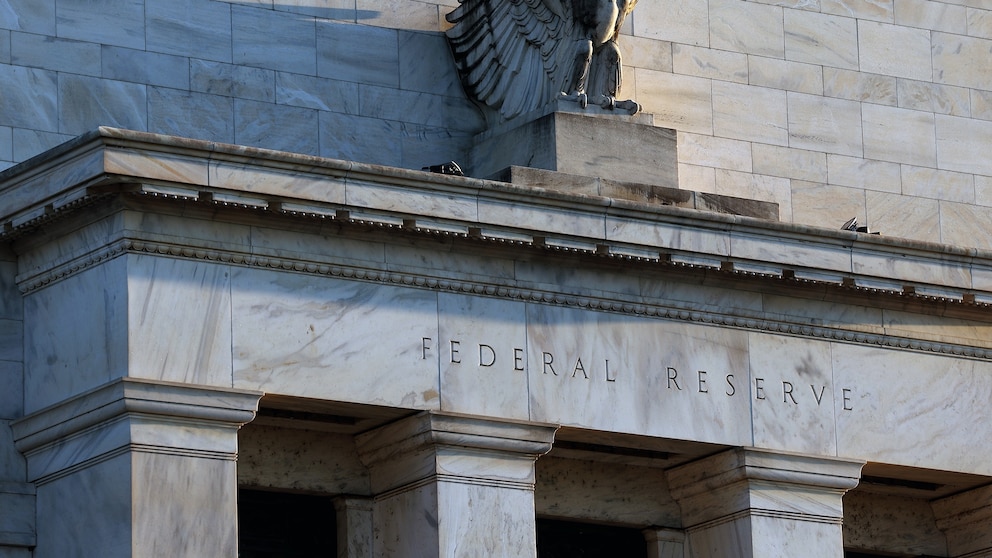Why The Fed Remains Cautious On Interest Rate Cuts

Table of Contents
Persistent Inflation as a Primary Concern
Inflation remains a primary concern for the Fed. Current inflation rates significantly deviate from the central bank's target of 2%, a deviation that continues to impact the purchasing power of consumers and the stability of the overall economy. The persistence of high inflation necessitates a careful approach to monetary policy, making swift interest rate cuts a risky proposition.
- The Impact of High Inflation: Stubbornly high inflation significantly erodes the value of savings, impacting household budgets and reducing consumer confidence. This, in turn, can lead to decreased consumer spending and potentially hinder economic growth.
- Eroding Savings: Persistent inflation means that the real value of savings diminishes over time, forcing individuals to adjust their spending habits and potentially delaying major purchases.
- The Fed's Commitment to Price Stability: The Fed's mandate includes maintaining price stability. Premature interest rate cuts risk reigniting inflation, potentially leading to a more challenging and prolonged fight against price increases. The Fed must consider the long-term consequences of its actions in relation to its goal of price stability and sustainable economic growth.
Contributing factors to this persistent inflation are multifaceted, including ongoing supply chain disruptions, elevated energy prices, and robust wage growth. Premature interest rate cuts could fuel these inflationary pressures further, potentially leading to a wage-price spiral and making it even harder to return to the Fed's desired inflation target. The Fed's cautious approach aims to avoid such a scenario.
Uncertainty Regarding the Labor Market
The current labor market presents a mixed picture. While unemployment remains relatively low, signaling a strong economy, this very strength contributes to inflationary pressures. This creates a delicate balancing act for the Fed when considering interest rate cuts.
- The Wage-Price Spiral: A tight labor market can lead to increased wage demands, pushing up labor costs for businesses. These increased costs are often passed on to consumers in the form of higher prices, creating a wage-price spiral that exacerbates inflation.
- Risk of Overheating: Reducing interest rates too quickly could overheat the economy, further fueling inflationary pressures and potentially leading to unsustainable economic growth.
- Wage Growth and Inflation: The Fed carefully monitors wage growth as a key indicator of inflationary pressure. Rapid wage increases, while positive for workers, can contribute to a cycle of rising prices if not managed carefully.
The possibility of a future recession adds another layer of complexity. While interest rate cuts could stimulate the economy during a downturn, implementing them prematurely during a period of high inflation could delay a necessary correction and potentially prolong the economic pain. The Fed is carefully assessing the risks associated with both scenarios.
Global Economic Headwinds
The global economic landscape presents significant headwinds that complicate the Fed's decision-making process regarding interest rate cuts. Geopolitical instability, ongoing supply chain disruptions, and the potential for further economic shocks worldwide all contribute to this uncertainty.
- Predicting the Impact: Global economic uncertainty makes predicting the precise impact of interest rate cuts exceptionally difficult. What might stimulate the US economy could exacerbate problems elsewhere, creating ripple effects that are hard to anticipate.
- Interconnectedness of the Global Economy: The global economy is deeply interconnected. Events in one region can have significant knock-on effects in others, making it crucial for the Fed to consider the international ramifications of its decisions.
- International Inflation and the Fed's Strategy: Inflation is a global phenomenon, and the Fed's strategy needs to account for external inflationary pressures. Global events impacting inflation can significantly influence the Fed's approach to interest rate cuts.
For instance, the ongoing war in Ukraine has significantly impacted energy prices globally, contributing to inflationary pressures in the US and elsewhere. The Fed must factor such external shocks into its analysis when considering the timing and magnitude of any potential interest rate cuts.
Maintaining Financial Stability
The Fed's role extends beyond controlling inflation; maintaining the stability of the financial system is paramount. Rapid interest rate cuts could destabilize financial markets and institutions.
- Risks to Financial Institutions: Sudden changes in interest rates can significantly impact financial institutions' balance sheets and profitability, potentially leading to increased risk aversion and reduced lending.
- Asset Bubbles and Risk-Taking: Lower interest rates can incentivize increased risk-taking and potentially contribute to the formation of asset bubbles, creating systemic vulnerabilities in the financial system. These bubbles, when they burst, can have devastating consequences for the economy.
- Inflation-Fueled Market Instability: High inflation, if not addressed appropriately, can also create instability in financial markets. This makes the timing of interest rate cuts even more critical, requiring a cautious approach to avoid exacerbating these challenges.
History provides examples of instances where rapid interest rate cuts had negative consequences, leading to increased volatility and even financial crises. The Fed is acutely aware of these risks and is proceeding cautiously to avoid repeating past mistakes.
Conclusion
The Federal Reserve's cautious approach to interest rate cuts stems from a confluence of factors: persistent inflation, uncertainty in the labor market, and significant global economic headwinds. The potential risks associated with premature cuts – exacerbating inflation, destabilizing financial markets, and delaying necessary economic adjustments – outweigh the perceived benefits in the current environment. Maintaining price stability and financial market stability remains the Fed's paramount concern.
Understanding the Fed's cautious approach to interest rate cuts is crucial for navigating the current economic climate. Stay informed by following reputable financial news sources for updates on interest rate decisions and their potential impact on your investments, spending, and overall financial well-being. The complexities surrounding future interest rate cuts and their far-reaching consequences demand careful consideration.

Featured Posts
-
 Champions League Semi Finals Barcelona Inter Arsenal Psg Dates
May 09, 2025
Champions League Semi Finals Barcelona Inter Arsenal Psg Dates
May 09, 2025 -
 Review Mariah The Scientists Burning Blue
May 09, 2025
Review Mariah The Scientists Burning Blue
May 09, 2025 -
 Vu Viec Bao Mau Bao Hanh Tre Em Tien Giang Cong Dong Can Lam Gi
May 09, 2025
Vu Viec Bao Mau Bao Hanh Tre Em Tien Giang Cong Dong Can Lam Gi
May 09, 2025 -
 Katya Joness Exit From Strictly A Wynne Evans Betrayal
May 09, 2025
Katya Joness Exit From Strictly A Wynne Evans Betrayal
May 09, 2025 -
 Slovenska Dakota Johnson Pozrite Si Jej Fotografiu
May 09, 2025
Slovenska Dakota Johnson Pozrite Si Jej Fotografiu
May 09, 2025
Latest Posts
-
 Markw Fyraty Msyrth Me Alerby Alqtry Bed Tjrbt Alahly Almsry
May 09, 2025
Markw Fyraty Msyrth Me Alerby Alqtry Bed Tjrbt Alahly Almsry
May 09, 2025 -
 Adae Fyraty Me Alerby Alqtry Thlyl Bed Antqalh Mn Alahly Almsry
May 09, 2025
Adae Fyraty Me Alerby Alqtry Thlyl Bed Antqalh Mn Alahly Almsry
May 09, 2025 -
 Fyraty Fy Alerby Alqtry Ma Aldhy Qdmh Mndh Antqalh Mn Alahly
May 09, 2025
Fyraty Fy Alerby Alqtry Ma Aldhy Qdmh Mndh Antqalh Mn Alahly
May 09, 2025 -
 Mstwa Markw Fyraty Me Alerby Alqtry Bed Andmamh Mn Alahly Almsry
May 09, 2025
Mstwa Markw Fyraty Me Alerby Alqtry Bed Andmamh Mn Alahly Almsry
May 09, 2025 -
 Bed Antqalh Llahly Almsry Mstwa Fyraty Me Alerby Alqtry
May 09, 2025
Bed Antqalh Llahly Almsry Mstwa Fyraty Me Alerby Alqtry
May 09, 2025
